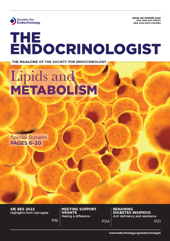Managing endocrine conditions during pregnancy can be challenging. Beck and colleagues present the case of a 26-year-old woman who presented at clinic with hypercalcaemia. Subsequent investigations supported a diagnosis of primary hyperparathyroidism due to a right-sided parathyroid adenoma. Her planned surgery was delayed due to the COVID-19 pandemic.
Subsequently, the patient presented with hyperemesis and dehydration when eight weeks pregnant, with a serum calcium of 3.48mmol/l. This hypercalcaemia did not improve substantially with rehydration. Severe hypercalcaemia in pregnancy presents risks to both maternal and fetal health. However, historically, parathyroidectomy is offered in the second trimester, because of the perceived risks of anaesthesia earlier in pregnancy. In this case, after weighing benefits and risks, it was decided to proceed with parathyroidectomy in the first trimester, under local anaesthetic.
This procedure proceeded successfully, with immediate resolution of hypercalcaemia and symptoms post-operatively. The patient remained normocalcaemic for the remainder of the pregnancy, and her baby was found to have a normal calcium level at delivery.
In their useful discussion, the authors highlight different options for managing primary hyperparathyroidism in pregnancy, and discuss the evidence base regarding timing of intervention.
Read the full article at Endocrinology, Diabetes & Metabolism Case Reports.





